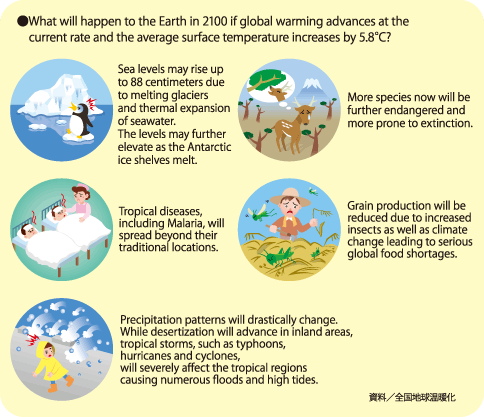Global warming stands as one of the most pressing challenges of our time. The ramifications of rising temperatures extend far beyond fluctuating weather patterns, touching upon ecological stability, economic viability, and public health. Given the urgency of the matter, the exploration of effective strategies to combat global warming warrants focused inquiry. Are the methods we utilize to prevent global warming truly effective? This question invites a myriad of perspectives, revealing both commendable progress and daunting setbacks.
The discourse surrounding global warming is replete with methodological elucidations aimed at mitigating its severe consequences. One emerging faction, renewable energy sources, has prominently taken center stage. Solar, wind, hydro, and geothermal energies are touted as sustainable alternatives to fossil fuels, which have been the primary culprits of carbon emissions. The transition towards these renewable sources has demonstrated promising results. As of recent years, many nations have accelerated their adoption of wind and solar power, leading to a measurable decline in carbon footprints. For instance, Denmark and Germany have significantly ramped up their renewable energy infrastructure, demonstrating that a paradigm shift is not only possible but profitable.
However, one must grapple with the inherent complexities of this transition. The intermittency of renewable sources presents challenges in energy storage and distribution. Technologies such as battery storage and smart grids are in developmental stages, striving to overcome this hurdle. While initial forays into renewable energy are promising, there lies a necessity for continued innovation and commitment to infrastructure improvements.
A critical examination also reveals the role of policy frameworks in addressing global warming. International agreements like the Paris Agreement underline the importance of collective action. Nations are tasked with setting ambitious targets for emission reductions, and many have pledged to reach net-zero emissions by mid-century. However, the effectiveness of these agreements hinges on compliance and accountability. Data show that while some countries are rising to the occasion, others may fall short, either due to economic constraints or political indecision. The promise of global cooperation is thus marred by the sobering reality of geopolitical challenges.
Additionally, the phenomenon of climate change must be understood within the context of carbon offsets and reforestation efforts. Initiatives aimed at preserving existing forests and restoring degraded lands are proving beneficial in sequestering carbon. Programs have been initiated to plant billions of trees globally, leading to tangible gains in biodiversity and ecosystem resilience. However, it begs the question: is tree planting an adequate solution, or merely a bandage on a deep wound? Critics argue that while these efforts are laudable, they should not serve as a replacement for reducing fossil fuel consumption. The delicate balance between preservation and innovation thus remains a pivotal point of discussion.
Consumption patterns also require introspection. The rise of a sustainable economy emphasizes the importance of altering consumer behavior. By shifting to plant-based diets and reducing waste through circular economy principles, individuals can contribute to significant reductions in greenhouse gas emissions. Numerous studies indicate that dietary choices can substantially influence emissions; for instance, reducing meat consumption fosters a lower carbon footprint. Educational campaigns and grassroots movements emphasize the importance of informed consumerism. However, mere advocacy is insufficient. Structural changes must accompany these educational efforts to ensure a realignment of societal norms.
Technological innovation plays a crucial role in combating climate change. Carbon capture and storage (CCS) technologies represent a frontier in this effort. By capturing carbon emissions from industrial processes and storing them underground, the potential exists to close the carbon loop. Yet, skepticism remains. The economic viability and scale of CCS technology are subjects of rigorous debate, necessitating ongoing research and development to ensure these methods can compete with traditional fossil fuel practices. Investment from both public and private sectors is imperative to give CCS the momentum it requires.
Moreover, the influence of climate activism cannot be overlooked. Movements mobilized by young activists have sparked a global conversation about climate justice and the ethical dimensions of environmental policy. These voices pose essential questions: Who bears the brunt of climate change? Are marginalized communities being adequately represented in climate discussions? Such inquiries are crucial to evolving the narrative from a purely scientific dilemma to one imbued with consideration for social equity.
As the investigation into global warming prevention continues, the interplay of science, policy, technology, and social awareness presents a rich tapestry woven with both triumphs and tribulations. Some methods are indeed delivering results, showcasing advancements in energy, policy reform, and community engagement. Yet, others reveal the myriad complexities and pitfalls inherent in this ambitious endeavor.
Ultimately, the efficacy of our strategies to prevent global warming hinges on adaptability. Continuous evaluation and refinement of approaches are crucial. Stakeholders must remain vigilant, willing to pivot as new information emerges and as conditions evolve. A comprehensive, multifaceted strategy—grounded in scientific understanding yet open to innovative thought—is essential for navigating the tumultuous waters of climate change. The road ahead will be fraught with challenges, but the commitment to a sustainable future remains a vital endeavor, beckoning humanity toward a hopeful horizon where global warming can be mitigated through collaborative and conscientious action.






